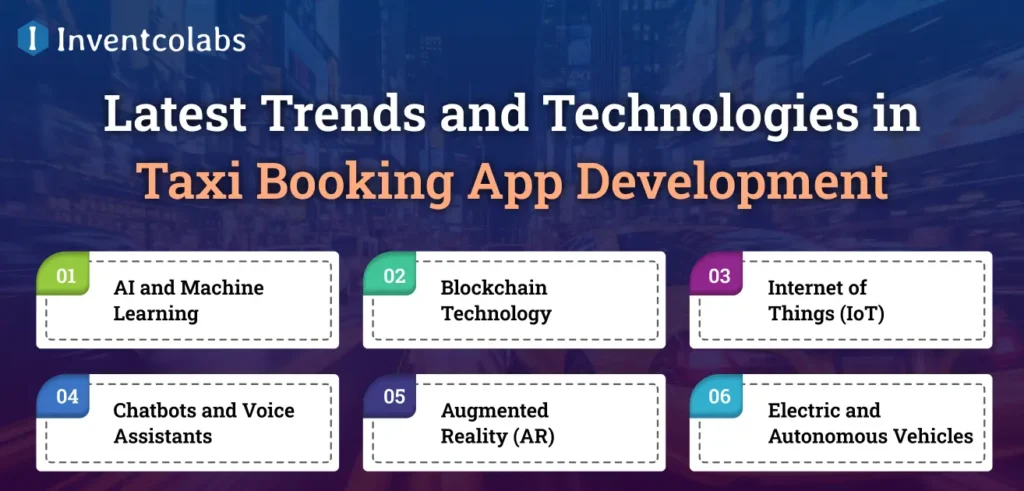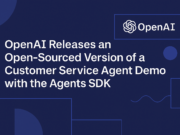Artificial Intelligence (AI) is vital in today’s mobile app development business. Hire dedicated developers to integrate cutting-edge technology to develop innovative applications and enhance the service provided. AI is commonly used in the transport industry to speed up complex and lengthy procedures.
In the report by Business of Apps, “The taxi app is expected to reach a significant size of $283 billion by 2028, with a noteworthy compound annual growth rate (CAGR) of 4.2% from 2023 to 2028. “
Including AI in taxi app booking isn’t only an advancement but an effort to stay on top of technological advancements, ensuring that our services remain at the forefront of reliability, efficiency, and customer-centricity in an ever-changing field.
Modern taxi apps utilize recent technologies like AI to keep users current and receptive. Users can, therefore, benefit from these Taxi Booking App Development Services by staying current with modern times. These days, AI-powered taxi applications offer new possibilities for taxi companies to draw and keep customers. AI can be used as an intermediary, making it easier to handle and facilitate various business functions while also recognizing human behavior. If you operate an online taxi company and are looking for efficient operations, this blog is designed to be ideal for you.
How is AI Reshaping the Future of Taxi App Development Services?
Established companies and startups in the transportation industry have harnessed artificial intelligence to build smart systems for ride-hailing services. One significant use case involves implementing an AI-powered taxi dispatch system, which would transform the industry by improving efficiency and elevating the level of service provided to customers.
Incorporating AI in their daily processes has become standard for ride-hailing companies worldwide, and Japan Taxi is an exceptional success story. Together with Toyota, Accenture, and KDDI Corporation, Japan Taxi created a taxi dispatcher software that uses predictive analytics and incorporates information from service logs, weather patterns, and public transportation availability to predict demand accurately. The test results showed an impressive 94.1 percent accuracy rate when forecasting the number of taxis in Japan’s Tokyo region.
Explore now: Develop Taxi Booking Application Specifically for Electric Vehicles or Integrating EV Solutions
The system can provide drivers with information and give suggestions on the most efficient ways to get a customer. This results in shorter waiting times for passengers and greater income for drivers, which is beneficial to both sides. AI integration into the transportation industry is an important step forward, bringing ride-hailing to higher levels.
Understanding the Core Components of Taxi App Development

When creating taxi apps, it is crucial to comprehend the essential elements that make these platforms effective. These include user-friendly interfaces with real-time tracking, secure payment systems, and robust backend support. Let’s explore the various components:
>User-Friendly Interfaces
User experience lies at the root of every successful app. In the case of taxi apps, this means developing user interfaces that are easy and simple to use. The most important features are:
- Simple Registration: Users should be able to sign up and login effortlessly using email, social media, or telephone numbers.
- Booking Options: We offer multiple booking options, including instant rides or scheduled trips and even the option to book other passengers, which improves user comfort.
- Information about the Ride: The ride details are clearly displayed, including the driver’s name, type of vehicle, estimated arrival time, and estimated cost.
- Evaluation and Rating Systems: Allowing customers to evaluate their experience can help ensure service quality and build confidence.
>Real-Time GPS Tracking
Live GPS tracking is the foundation of taxi apps, supplying drivers and passengers with accurate information about their location. This feature is comprised of:
- Live location updates: Customers can observe their driver’s location in real time, and drivers receive continuous updates about their rider’s location.
- Route Optimization: Intelligent algorithms help calculate the most efficient routes, considering traffic conditions and other factors.
- ETA Calculation:Offering precise estimated arrival times (ETA) improves the user experience and operational efficiency.
>Secure Payment Systems
Payments must be securely and safely integrated. A dependable taxi app must accept various payment options that provide convenience and security for the users. Important aspects include:
- Multi-Payment Options: Integration of debit and credit accounts, wallets with digital transactions, and even cash on delivery, which caters to customers’ various preferences.
- In-App Payments: ensuring transactions are processed within the app to provide a more effortless user experience.
- Security and encryption:Implement robust encryption methods to secure customers’ financial and personal information.
Robust Backend Support
A solid backend is essential to control the app’s operations and sizing up as user demand increases. This is an excellent example of the following:
Database Management: Effective management of user data such as ride history and transaction records.
Scalable Architecture: the capability to cope with increased load as the number of users grows.
Maintenance and Support: Continuous monitoring and updates of the application ensure the highest performance and quick resolution of any problems.
Latest Trends and Technologies in Taxi Booking App Development

Before tackling the latest technology and trends in the development of taxi booking apps, It is crucial to understand the basics of the taxi booking application. The taxi app can be described as a platform that lets users reserve a cab or taxi quickly and easily using their smartphone.
It connects customers with drivers nearby, enabling an effortless, effective, and immediate booking experience. Estimated fares, live tracking, and cashless payment choices often accompany it.
The way that businesses and industries operate is influenced by evolving technological trends. Nowadays, it’s much easier for companies to provide products at affordable prices and deliver excellent customer service to improve their customers’ experience.
Even the taxi industry, a major participant in the international economy, is experiencing significant changes because of the most recent technological advancements. We will look at some of the most critical advances in on-demand taxi app development!
>AI and Machine Learning
One of the major developments affecting taxi booking app development is the incorporation of AI and machine learning. These tools let apps predict users’ behavior, providing the most personalized experience. They aid in predicting peak times and analyzing users’ travel patterns and even suggest the most effective ways to drive, increasing efficiency.
For instance, machine-learning algorithms can study travelers’ past travel patterns and forecast the most likely date and location of their next trip. This kind of predictive analysis could assist companies in providing customers with a more personal experience by recommending relevant services or offering personalized discounts to increase customer satisfaction.
Explore now : How To Build Taxi Booking App Like Uber In 2024: A Detailed Guide
>Blockchain Technology
Blockchain technology has become a promising option for developing taxi booking apps. It is secure and increases trust among users. Blockchain helps maintain transparency by storing the details of transactions in a permanent digital ledger.
Imagine that an individual disagrees with a price. The indestructible digital ledger created by blockchain tracks every transaction, giving an undisputed reference. Blockchain increases user confidence by providing transparency, guarantees information security, and blocks fraudulent transactions.
>Internet of Things (IoT)
IoT has created a buzz across all industries, and taxi booking applications are no exception. Integrating IoT within taxi applications could enhance security standards by tracking the vehicle’s location and monitoring driver behavior. In addition, IoT integration can provide essential data that allows companies to design optimized routes and decrease waiting times.
For instance, IoT-enabled devices used in taxis could give real-time information about the taxi’s location, speed, and driver behavior. This information is essential in ensuring the safety of passengers and helping businesses monitor driver performance.
>Chatbots and Voice Assistants
With natural language processing and AI advancements, voice and chatbots are increasingly popular in taxi booking applications. These AI-powered tools can assist passengers in making reservations, provide solutions to commonly asked queries, and provide instant information about their trips.
For instance, one can say to the voice assistant, “Book a ride to Central Park at 5 PM,” and the app will take care of all the rest and make the experience effortless.
Augmented Reality (AR)
While still in the initial stage of development, AR has the potential to transform taxi booking apps dramatically. AR could provide 3D navigation for drivers and even inform passengers of exactly where they are in their taxis in real-time. This greatly enhances the experience of passengers.
A good example is an AR-enabled navigation system designed for drivers, in which directions and routes are superimposed over the actual view of the road, which makes navigation more intuitive and easy. In the same way, AR can display passengers the exact location of their cabs in real-time, in an immersive 3D perspective, increasing passenger experience.
Explore now : Guide On Taxi App Development Everything You Should Know In 2024
>Electric and Autonomous Vehicles
With the growing focus on sustainability, increasing numbers of taxi apps are adding features that are compatible with electric vehicles. Additionally, the development of autonomous vehicles could revolutionize the taxi industry by incorporating this technology into the apps. Although we’re still years away from making this the norm, a few companies, such as Waymo, are currently testing autonomous cars for rides. Once the technology becomes widespread, it will significantly affect the taxi booking app development.
How Taxi Booking Apps Work?

Taxi booking apps are part of an advanced network of logistics and technology that provides the smoothest experience for drivers and passengers. Here’s a quick description of the way these applications usually function:
User Registration: The process typically begins by installing the taxi reservation application from their app stores and registering an account. Users might be required to supply basic information, such as their name, contact information, and payment preference.
Locator Services: Users can use the app to define their device’s location and preferred destination once registered. This is usually done with GPS technology, which allows the application to determine the user’s location precisely.
Driver Availability: When it receives the user’s request, the app’s backend system searches for nearby drivers using real-time information. This is based on factors like driver availability, proximity to the driver, and demand in the vicinity.
Trip Confirmation: When a driver in close proximity is detected, the app will notify the user of details like the driver’s name, the vehicle’s type, and the approximate time of their arrival (ETA). The user can then confirm the trip and follow the driver’s progress via a map inside the application.
Payment Processing: Many taxi booking apps have cashless payment methods, which allow customers to make payments for taxi rides online through the application. The payment methods used are typically debit or credit cards, mobile wallets, or any other payment platform integrated into the application.
Evaluation and rating: After the trip has been completed, the passenger and driver can rate and evaluate one another based on their experiences. This feedback mechanism is designed to ensure high standards of service and also ensure accountability on the platform. Driver Navigation: During the journey, drivers depend on the app’s navigation tools to get to their destinations quickly. These tools typically provide real-time updates on traffic conditions, alternative route suggestions, and voice-guided directions.
Backend Management: Behind the scenes, the taxi booking application’s backend system handles different aspects of the business, including the allocation of drivers, trip planning, payment processing, and customer service. This is a complex process that requires sophisticated algorithms and databases to maximize efficiency and guarantee an unbeatable user experience.
>How Much Does It Cost to Create a Taxi Booking App?
Find out the costs of creating a Flutter app by 2024. Learn about the most recent pricing trends and the factors that affect the development costs of apps.
The cost of creating taxi booking apps depends on the application’s size and complexity, its technology stack, and the development team’s geographical location. The majority of taxi booking apps are classified into three types: small, mid-level, and large. This is a breakdown of the implications of every size, taking into consideration the timeline, budget, and general characteristics.
>Small Taxi Booking App
Budget: The costs for a basic Taxi App Development range between $10,000 and $20,000. This varies mainly depending on whether the app was built in a high-cost area like North America or a lower-cost region like Europe.
Timeline: A tiny application with a simple list of features and a focus on one platform (iOS and Android) could take 2 to 4 months to create.
General Features:
- Profile management and registration of users
- Essential booking of rides and cancellation
- The GPS tracker of your Ride
- Integration of payment gateways
- Car and driver details
- Reviews and ratings
This model is generally designed for businesses or startups that want to test the market using minimum viable products (MVPs).
>Mid-Level Taxi Booking App
Budget: This budget range can accommodate higher-end features and could even include developing for iOS or Android platforms using the cross-platform framework.
Timeline: The timeframe for developing a mid-level application can vary between 4 and seven months. This lengthened timeline allows the integration of more advanced features and the development of refined user interfaces and experiences.
General features: Include all functions of the base app and more.
- Options for advanced booking (e.g., setting up an appointment to be scheduled for a later date)
- In-app messages between drivers and passengers
- Estimated prices and dynamic pricing
- Options for enhanced payment (e.g., wallet system)
- Programs for loyalty or promotions
- Accessibility features to assist users with disabilities
This option is suited for companies ready to make a more significant investment to provide a competitive item in the marketplace.
Explore now : Exploring the Future of Transportation in Taxi App Development
>Large Taxi Booking App
Budget: The large Taxi App Development cost can vary in terms of its functionalities. Hence this budget will cover the most comprehensive features, premium customizations, and scaling options.
Timeline: Depending on the amount of testing, complexity, and deployment stages required, an application may take 7 to 12 months to build.
General Features: All features of the app for mid-level users. It also includes:
- AI-driven analytics to optimize routes and forecast demand
- Blockchain technology to ensure transactions are secure
- Alerts and notifications in real-time
- Multi-language support
- Integrating with services from third parties (e.g., music streaming and chat in-app)
- Advanced security functions (e.g., SOS button and Ride sharing with your family)
A vast app targets established companies or organizations seeking to be the market leader by providing many features to improve user experience, operational efficiency, and security. The price of creating an app for booking taxis is determined by the app’s complexity, geographical location of the company, and the particular technology stack. Each increase in complexity raises costs and development time while improving the app’s ability to meet diverse user needs and stand out in a competitive market.
Conclusion
Modern technology and innovative methods promise to change it, improving users’ experience, boosting operational efficiency, and aiding sustainable urban mobility.
From electric and autonomous vehicles to AI-driven enhancements and cybersecurity in blockchain, the latest trends and advances in taxi app development will change the way we view and experience transportation.
While these patterns continue to develop and change, staying at the forefront will be essential for taxi service providers and app developers. By taking advantage of these trends, this sector can anticipate the future of more intelligent, safer, more secure, and efficient solutions for urban mobility.
A taxi app development company that can adapt to changing developments and utilize the latest technologies are well-placed to succeed in the ever-changing and competitive market of the future.


















![Diablo 4 Mod Apk Newest Model [Unlimited Excitement]](https://digibytetoday.com/wp-content/uploads/2025/06/1750344127_1-final-180x135.jpg)


















